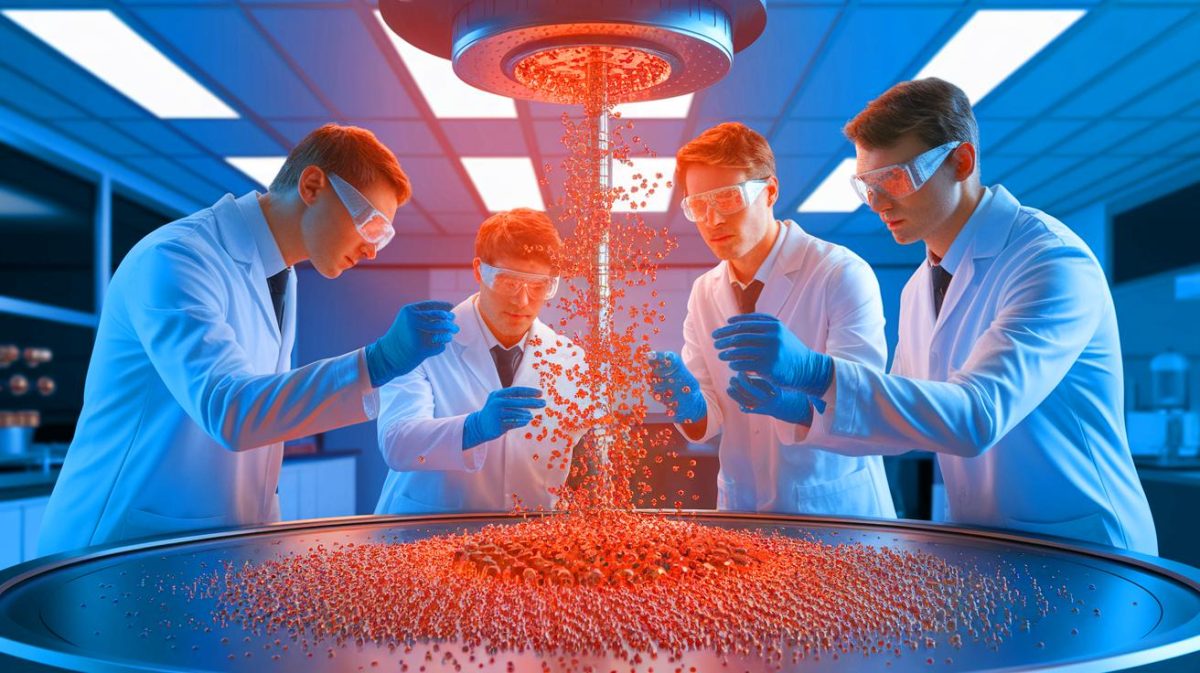| IN A NUTSHELL |
|
Scientists from the Lawrence Berkeley National Laboratory and SLAC National Accelerator Laboratory have made a groundbreaking discovery in the field of artificial photosynthesis. By utilizing advanced X-ray techniques, they have uncovered the critical factors that limit the performance of copper catalysts in converting carbon dioxide and water into useful fuels. This revolutionary insight could significantly enhance the stability and efficiency of catalysts in CO2 conversion processes, potentially accelerating the production of ethanol and ethylene. The research, which tackles a decades-old puzzle, offers promising avenues for the development of more durable catalyst systems, paving the way for future advancements in sustainable energy solutions.
Understanding the Role of Copper in CO2 Conversion
The process of CO2 electrochemical reduction reaction (CO2RR) has been a focal point for scientists for decades. This reaction is pivotal in transforming carbon dioxide and water into valuable fuels and chemicals. The 1980s marked a significant breakthrough when researchers identified copper as an effective catalyst for producing essential substances like ethanol and ethylene. Copper’s effectiveness is attributed to its active sites, where chemical reactions occur as its electrons interact with CO2 and water, ultimately creating new compounds.
Despite its potential, copper catalysts face a major challenge: their performance declines rapidly during the CO2RR process. Until recently, the reasons for this decline were not fully understood. However, the recent study by Lawrence Berkeley National Laboratory and SLAC National Accelerator Laboratory provides crucial insights. By employing advanced X-ray imaging techniques, researchers have been able to observe copper nanoparticles in action, identifying two primary processes that contribute to catalyst degradation: particle migration and coalescence and Ostwald ripening. Understanding these processes is key to designing more resilient catalysts.
Deconstructing the Catalyst Degradation Process
In their study, scientists used small-angle X-ray scattering (SAXS) at the Stanford Synchrotron Radiation Lightsource to monitor the behavior of copper oxide nanoparticles during the CO2RR. They conducted experiments on 7-nanometer copper particles within a specially constructed electrochemical cell containing a water-based solution. By applying varying voltages, they observed how the particles changed over time.
Within the first 12 minutes of the reaction, the particles primarily underwent particle migration and coalescence (PMC), moving and clumping together. Subsequently, the Ostwald ripening process took precedence, where smaller particles dissolved, and their material was redeposited onto larger ones. Interestingly, lower voltages prompted more particle movement, while higher voltages accelerated the Ostwald ripening process. These findings were corroborated using X-ray absorption spectroscopy, which revealed that copper oxide particles initially transformed into pure copper before changing in shape and size.
AI Outperforms Chinese Pilots in High-Stakes Aerial Combat: A Glimpse into the Future of Warfare
Enhancing Catalyst Longevity for Better Fuel Production
The research team also employed powerful electron microscopes at Berkeley Lab’s Molecular Foundry to validate their observations. They discovered that copper particles merged into larger clusters during the reaction, providing vital insights into the degradation process. These revelations suggest various mitigation strategies to protect catalysts, such as improving support materials to limit PMC, or employing alloying strategies and physical coatings to minimize dissolution and reduce Ostwald ripening.
Looking ahead, the researchers plan to explore protective strategies, including organic molecule coatings developed with Caltech’s LiSA group. These coatings could guide CO2RR reactions towards producing specific fuels and chemicals, offering a targeted approach to catalyst protection. The detailed findings of this research have been published in the Journal of the American Chemical Society, underscoring its significance in the scientific community.
Implications and Future Prospects
The implications of this discovery are far-reaching. By enhancing the durability and efficiency of copper catalysts, the production of ethanol and ethylene could see significant improvements, boosting the viability of sustainable energy solutions. Moreover, the ability to stabilize catalysts opens new possibilities for designing advanced systems capable of withstanding the rigorous demands of CO2 conversion reactions.
As researchers continue to innovate and refine their strategies, the potential for more efficient and durable catalyst systems becomes increasingly tangible. This breakthrough not only addresses a longstanding scientific challenge but also sets the stage for future advancements in the field. What other innovations might arise from these cutting-edge discoveries, and how will they shape the future of sustainable energy?
Did you like it? 4.5/5 (23)









Wow, this is groundbreaking! Could this lead to cheaper fuel in the near future? 🙌
So, is this the end of fossil fuels as we know it? 🌍
Thank you to the scientists for their hard work. This gives me hope for our planet! 😊
I wonder how long it will take for this technology to become commercially viable.
Isn’t copper expensive? How will this affect the overall cost of production?
Can this be used on a large scale, or is it just lab-based for now? 🤔
This is great, but what about the environmental impact of mining more copper?
Finally, some good news on the climate front! 🎉
I’m skeptical. It sounds too good to be true. What are the potential downsides?
With these advancements, how soon can we expect to see a reduction in CO2 levels?
Great job, Berkeley scientists! Can’t wait to see where this leads.
The integration of carbon management and artificial photosynthesis could revolutionize sustainable fuel production and CO₂ utilization 👍